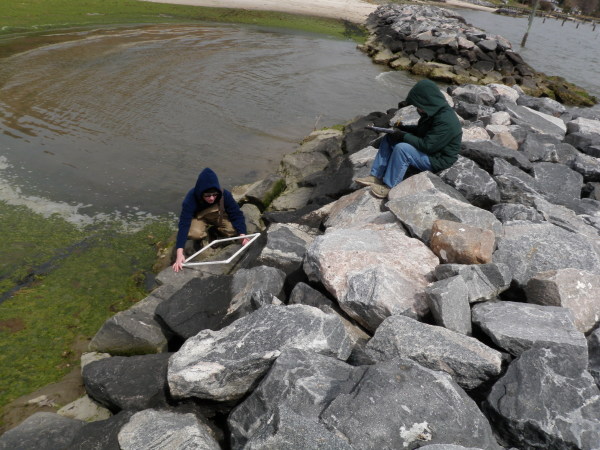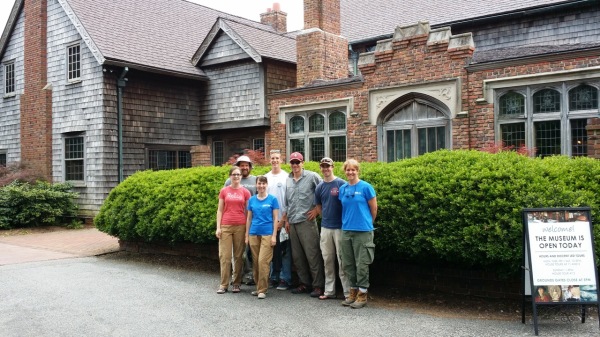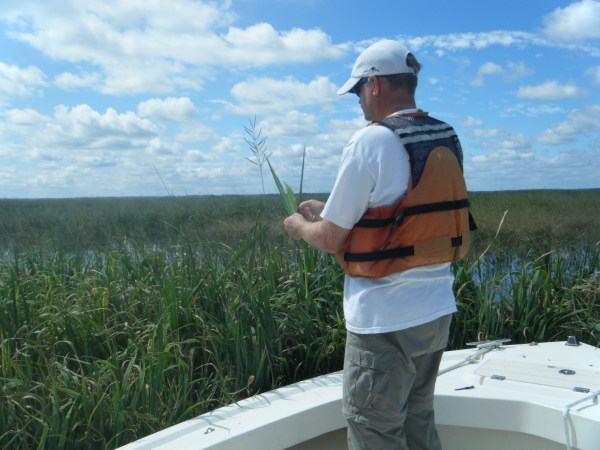The Rising Tide – VIMS’s CCRM
 One of the biggest obstacles when it comes to implementing sustainable collective action is overcoming the different stakeholder groups’ individual claims for the “best” or “most appropriate” strategy. The Center for Coastal Resource Management at VIMS (CCRM) is often charged with tackling these issues, balancing the line between research and policy, while staying rooted in science. “We exist to do a lot of the translation of science to managers and policymakers. We’re the interface between the basic research and the applied research,” Carl Hershner, the director of CCRM, explained.
One of the biggest obstacles when it comes to implementing sustainable collective action is overcoming the different stakeholder groups’ individual claims for the “best” or “most appropriate” strategy. The Center for Coastal Resource Management at VIMS (CCRM) is often charged with tackling these issues, balancing the line between research and policy, while staying rooted in science. “We exist to do a lot of the translation of science to managers and policymakers. We’re the interface between the basic research and the applied research,” Carl Hershner, the director of CCRM, explained.
CCRM was founded around 30 years ago, and has grown to include 24 researchers and 7 students performing coastal research. CCRM researchers come from many disciplines; obviously largely marine ecology, but also GIS specialization, geology, and hydrodynamic modeling. The nature of the research itself has changed over time as well. At its creation CCRM focused in tidal wetlands. Soon after, they expanded into non-tidal wetlands, and now perform a variety of research under the umbrella of “coastal management”, including riparian and littoral areas and marine debris.
This broad coverage may seem overwhelming, but in most projects it undertakes, CCRM simply sets out to use science to inform decision making. Policy makers and local managers come to CCRM and charge them with exploring a problem or solving an issue. Advising aside, CCRM has been at the forefront of climate change research in Virginia.
When we think about obstacles to developing a sustainable community, we often consider the impacts of climate change. In Virginia, the biggest looming issue is sea level rise. The Virginia coast is the second most vulnerable area in the U.S., with sea level rise rates twice the national average. (The Gulf region surpasses us with rates nearly three times the national average.) Not only is our coast more at risk, but we also have more – well, stuff – on our coast than in most other regions of the US. Virginia coastal real estate is highly prized for residences and businesses. Tourism on the Eastern Shore and in Virginia Beach is a huge economic driver. The Norfolk naval station is the largest naval base in the world. NASA’s Wallops Island flight facility is located on the Eastern Shore and needs to be able to launch over the water… I could go on for quite a while. “It’s high stakes,” said Emily Egginton Skeehan, current M.S. candidate at VIMS. “Virginia is in the unique position of having both a high relative rate of sea level rise and many water dependent industries which support the local economy.”
Sea level rise is an unavoidable issue on the Virginia coast, and one that CCRM has been involved in (scientifically and politically) since the beginning.
- In the early 2000s, CCRM researchers noticed changes in the wetland systems they were studying, and worked to figure out why. This research preceded Virginian governmental interest and action a few years later…
- In 2007, Governor Tim Kaine appointed the Climate Change Commission. VIMS took part in this group, which researched and wrote a climate action plan for Virginia.

- In 2008, the Commission on Climate Change’s plan was published. This plan was unfortunately shelved and no further action was taken for the next few years.
- In 2012, the Virginia General Assembly called for CCRM to produce a report on sea level rise and flooding risk.
- In 2013, the General Assembly report was published.
- In 2014, two separate state groups were developed to look at the issue: the Joint Legislative Committee on Recurrent Flooding and the Governor’s Climate Commission – both are currently ongoing.
Property owners are understandably concerned about flooding, but sea level rise causes a host of other stealthier issues that impact sustainability in coastal Virginia. Saltwater intrudes into aquifers and contaminates drinking water. Increased salt content in streams shifts marsh communities upriver, which has implications for bird and fish populations. Water inundation into marshes and other wetlands can drown the system entirely. “It’s a nursery habitat for prey fish, blue crabs, smaller fishery species, so when you lose [the wetland], you lose things all through the food chain,” Molly Mitchell, CCRM senior researcher, explained. Our beaches are disappearing as well, so efforts have increased to nourish the beaches with outside sand. This brings with it a few problems: we are now exhausting our sand resources, both with intense beach nourishment and the advent of fracking. Fracking also uses sand in its processes, so the amount of sand available is decreasing and the price for it is increasing. Beach nourishment is also not an entirely sustainable practice, as Hershner explained. “If you’re not allowing the backside [of the beach] to migrate, as you pile things up you’re just making the beach steeper and steeper over time, which makes it less and less stable.” This is even not to mention other typical climate change effects, such as increased temperature, changing growing seasons, and increased migration of diseases and pests.
Whew.
All these catastrophic predictions can make you want to throw your hands up, or just shrug them off as they haven’t happened yet. CCRM is still working, however, and keeping their heads up.
”None of it is going to happen tomorrow, which is the interesting part of the policy development – getting people to appreciate the significance of the changes that will occur, while also understanding that it’s not like we all have to pick up and move tomorrow,” Hershner said. “We all have to figure out how to wisely use the resources for the period of time that we can.
This is not a problem to run around screaming about, nor is it a problem to ignore – instead, it is a threat that must be constantly reevaluated. Egginton Skeehan said, ” While scientists all agree that there will be a significant increase in sea level over the coming decades, it’s really hard for scientists to agree on one exact sea level scenario because the different scenarios are based on how much emissions we choose to produce. It’s kind of up to us.” Mitchell adds an example — “We designed our retention ponds for 50-year storms. But that was a ‘50-year storm’ from thirty years ago. Those 50-year storms have now become 20-year storms. We’re designing for an expectation that’s not realistic,” she said. “So that’s been a huge problem with the way people want to design – you want standards, you like standards. It’s hard to give standards in a changing system.”
“I see sea level rise as an issue that can genuinely be dealt with and does not need to be a crisis, but only if we start to take it seriously and start to plan for it now,” she ended. “You can’t stop the water from coming up, but you can keep the state and the people sustainable, resilient, whatever you want to call it.”
Want to get involved?
- On December 5, the “Adaptive Planning for Flooding and Coastal Change in Virginia: Next Steps for the Commonwealth” conference is coming to W&M! Learn more, and contact mbsaunders@email.wm.edu with questions.
CCRM is currently looking for interested students to help with their ongoing and future research projects including:
- Inventory of tidal wetlands for signals of climate change impacts
- Shoreline ecosystem service capacity
- Sea level rise vulnerability and spatial distribution of risk
- SAGE green engineering
Want to know more?
- Read CCRM’s paper, “Recurrent Flooding Study for Tidewater Virginia.”
- Take a look at NOAA’s Sea Level Rise imager to see how different predicted levels of sea level rise would affect the nation’s coastal regions.
Comments are currently closed. Comments are closed on all posts older than one year, and for those in our archive.





I had no idea! This is all new to me, a resident of VA for 20 years. I remember several years ago there was a lot of talk about expansion of the Norfolk area for sea commerce, but then really never saw this on the political radar. Also, an interesting point about the Gulf region being the only other area in the US that surpasses us for rising sea levels. I am wondering also whether the “other” Gulf region — in the middle east — is an area to investigate for lessons learned , since so much of their land is reclaimed coastal areas. Thank you for publishing this.